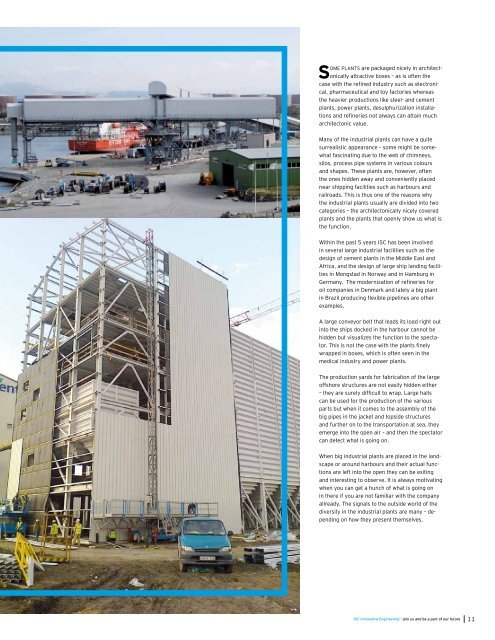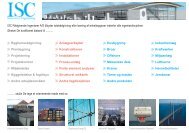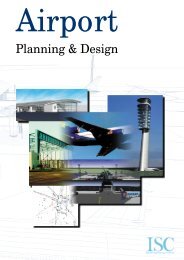Læs mere - ISC Rådgivende Ingeniører A/S
Læs mere - ISC Rådgivende Ingeniører A/S
Læs mere - ISC Rådgivende Ingeniører A/S
Create successful ePaper yourself
Turn your PDF publications into a flip-book with our unique Google optimized e-Paper software.
S<br />
OMe PLANTS are packaged nicely in architectonically<br />
attractive boxes – as is often the<br />
case with the refined industry such as electronical,<br />
pharmaceutical and toy factories whereas<br />
the heavier productions like steel- and cement<br />
plants, power plants, desulphurization installations<br />
and refineries not always can attain much<br />
architectonic value.<br />
Many of the industrial plants can have a quite<br />
surrealistic appearance – some might be somewhat<br />
fascinating due to the web of chimneys,<br />
silos, process pipe systems in various colours<br />
and shapes. These plants are, however, often<br />
the ones hidden away and conveniently placed<br />
near shipping facilities such as harbours and<br />
railroads. This is thus one of the reasons why<br />
the industrial plants usually are divided into two<br />
categories – the architectonically nicely covered<br />
plants and the plants that openly show us what is<br />
the function.<br />
Within the past 5 years <strong>ISC</strong> has been involved<br />
in several large industrial facilities such as the<br />
design of cement plants in the Middle east and<br />
Africa, and the design of large ship landing facilities<br />
in Mongstad in Norway and in Hamburg in<br />
Germany. The modernization of refineries for<br />
oil companies in Denmark and lately a big plant<br />
in Brazil producing flexible pipelines are other<br />
examples.<br />
A large conveyor belt that leads its load right out<br />
into the ships docked in the harbour cannot be<br />
hidden but visualizes the function to the spectator.<br />
This is not the case with the plants finely<br />
wrapped in boxes, which is often seen in the<br />
medical industry and power plants.<br />
The production yards for fabrication of the large<br />
offshore structures are not easily hidden either<br />
– they are surely difficult to wrap. Large halls<br />
can be used for the production of the various<br />
parts but when it comes to the assembly of the<br />
big pipes in the jacket and topside structures<br />
and further on to the transportation at sea, they<br />
emerge into the open air – and then the spectator<br />
can detect what is going on.<br />
When big industrial plants are placed in the landscape<br />
or around harbours and their actual functions<br />
are left into the open they can be exiting<br />
and interesting to observe. It is always motivating<br />
when you can get a hunch of what is going on<br />
in there if you are not familiar with the company<br />
allready. The signals to the outside world of the<br />
diversity in the industrial plants are many – depending<br />
on how they present themselves.<br />
<strong>ISC</strong> Innovative Engineering - join us and be a part of our future 11





